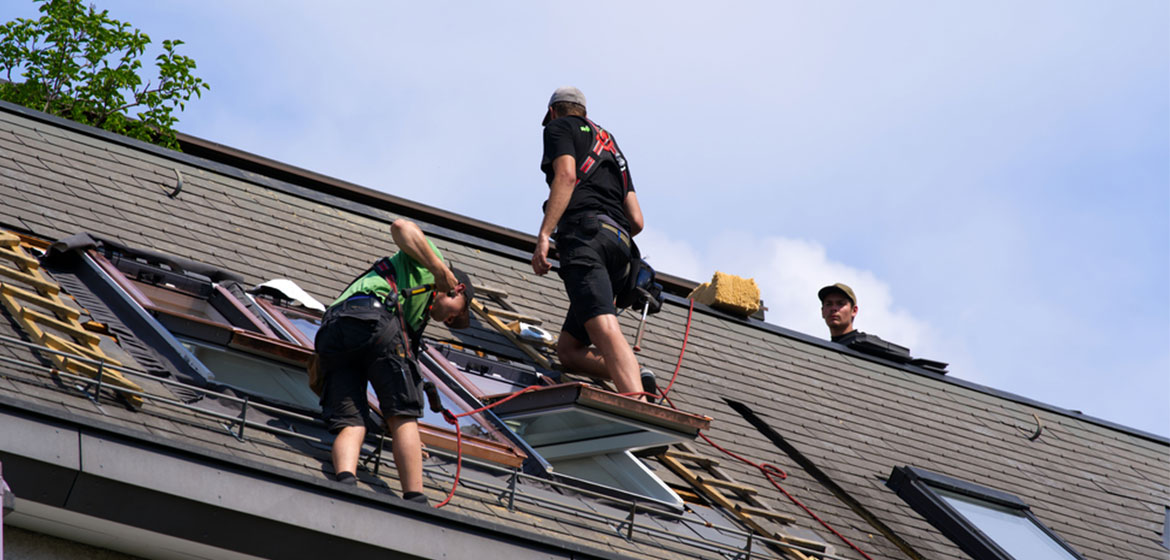10 Ways Strong Winds Can Damage Your Commercial Building Roof

Strong winds can pose a significant threat to the integrity of commercial building roofs. Whether it’s from hurricanes, tornadoes, or severe storms, the force of the wind can cause extensive damage if the roof is not adequately designed, installed, or maintained. In this post, we will explore the various ways in which strong winds can damage commercial building roofs, highlighting the importance of proactive measures to mitigate these risks.
Lift and Uplift
One of the most common ways strong winds can damage a commercial building roof is through lift and uplift. As wind flows over the roof’s surface, it creates a pressure difference, resulting in uplift forces. If the roofing materials are not securely fastened or the roof structure lacks adequate reinforcement, the wind can lift and separate sections of the roof, leading to partial or complete roof failure.
Wind-Driven Rain and Water Intrusion
Strong winds often accompany heavy rain during storms, and this combination can lead to water intrusion through the roof system. If the roof is compromised or has weak spots such as damaged or missing shingles, loose flashing, or gaps in the roof membrane, wind-driven rain can penetrate the roofing system, causing leaks, moisture damage, and potential structural deterioration over time.
Roof Membrane Damage
Commercial building roofs often have flat or low-slope designs with roofing membranes as a protective layer. Strong winds can cause the roofing membrane to become loose, tear, or detach from the roof surface. This can expose the underlying layers to moisture, UV radiation, and other environmental elements, compromising the roof’s overall performance and reducing its lifespan.
Damage to Flashing and Sealants
Flashing and sealants play a critical role in preventing water penetration at vulnerable areas such as roof edges, corners, vents, and equipment penetrations. Strong winds can dislodge or damage the flashing, compromising its ability to provide a watertight seal. This allows water to infiltrate the building, leading to leaks, interior damage, and potential mold growth.
Structural Damage
High winds exert significant pressure on the entire building structure, including the roof. If the roof structure is weak, inadequately designed, or lacks proper reinforcement, it can be susceptible to structural damage. This can manifest as roof deck uplift, rafter or truss failure, or even partial or complete roof collapse, posing severe risks to the occupants and the building’s overall stability.
Damage to Rooftop Equipment
Commercial buildings often house rooftop equipment such as HVAC units, exhaust fans, and communication antennas. Strong winds can subject these types of equipment to increased stress and strain. Improperly secured or insufficiently braced equipment may become dislodged or damaged, potentially causing further damage to the roof structure and nearby components or even posing a safety hazard to people and property below.
Debris Impact
During severe wind events, debris such as tree branches, signage, or construction materials can become airborne projectiles, posing a significant threat to the roof. When propelled by strong winds, debris can puncture or damage the roof membrane, leading to immediate leaks or compromising the roof’s overall integrity.
Loss of Insulation and Energy Efficiency
Strong winds can cause the insulation material beneath the roof to become dislodged or damaged. This can lead to the loss of insulation effectiveness and result in energy inefficiency, as the building’s heating and cooling systems have to work harder to compensate for the compromised insulation. This can significantly impact energy costs over time.
Impact on Business Operations
A damaged roof can disrupt normal business operations, leading to downtime, loss of productivity, and potential financial losses. Water leaks, interior damage, and compromised structural integrity may require immediate repairs or even complete roof replacement, resulting in temporary closures, relocation of employees, and interrupted workflow.
Increased Insurance Costs and Loss of Coverage
Frequent roof damage due to strong winds can result in increased insurance premiums and, in some cases, loss of coverage. Insurance companies may consider the building a higher risk if it has a history of wind-related claims, leading to higher premiums or difficulty in finding coverage. Maintaining a well-designed and properly maintained roof can help mitigate these insurance-related challenges.
Strong winds can cause significant damage to commercial building roofs, jeopardizing the safety of occupants, the integrity of the structure, and business operations. Understanding the potential risks and implementing proactive measures such as regular roof inspections, proper maintenance, reinforcement of vulnerable areas, and adherence to building codes and standards are crucial for minimizing wind-related damage. By prioritizing the protection and maintenance of commercial building roofs, property owners can ensure the longevity and resilience of their structures in the face of strong winds.